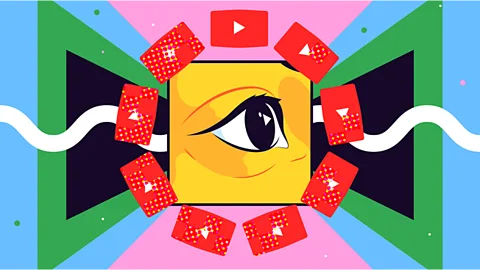
YouTube is about to turn 20, and a unique research method is revealing statistics about the platform that Google would prefer to keep private.
YouTube might not seem secretive since it's public-facing, allowing you to watch endless content. There has been a lot of research on the platform, exploring everything from its economy to the radicalizing effects of its algorithm. However, things get unclear when you ask simple questions, like how much YouTube we all watch.
Google, which owns YouTube, keeps quiet about this and other details. In February, the company disclosed that people watching YouTube on their TVs collectively view one billion hours a day, but the total numbers for the platform remain a mystery. Estimates suggest YouTube has about 2.5 billion monthly users—nearly one in three people on Earth—and the average mobile app user watches around 29 hours a month. Let's try some quick calculations.
If we assume the monthly viewing average for app users applies to all YouTube users on both the website and TV, we can multiply 2.5 billion by 29 hours. This suggests that humanity watches about 8.3 million years of videos on YouTube each month. Over 12 months, that amounts to nearly 100 million years, hundreds of times longer than the entirety of human history.
How many YouTube videos are there? What are they about? What languages do YouTubers speak? As of February 14, 2025, the platform will have been running for 20 years. That's a lot of videos. Yet, we have no idea how many there really are. Google knows the answers but won't share them.
Experts say that's a problem. One of the most powerful communication systems ever created—a tool that provides a third of the world's population with information and ideas—is operating in the dark.
Part of the issue is that there's no easy way to get a random sample of videos, according to Ethan Zuckerman, director of the Initiative for Digital Public Infrastructure at the University of Massachusetts at Amherst in the US. You can choose videos manually or rely on the algorithm's recommendations, but finding an unbiased selection worthy of real study is difficult. A few years ago, however, Zuckerman and his team of researchers came up with a solution: they designed a computer program that randomly pulls up YouTube videos, trying billions of URLs at a time.
